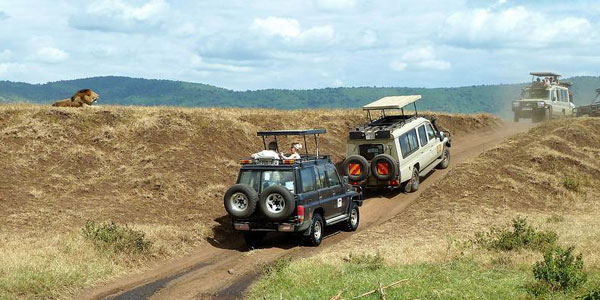East Africa is blessed with deep history, incredible culture and magnificent natural resources. Thanks to The United Nations Educational, Scientific and Cultural Organization (UNESCO), much of this legacy has been inscribed on its World Heritage list allowing the coming generations to be able to enjoy the beauty the East African countries hold.
Many natural resources in East Africa have been recognised on the World Heritage List. Here are six natural resources that are part of UNESCO’s World Heritage list.
Serengeti National Park, Tanzania
Famed for its Wildebeest Migration, one of the Seven Natural Wonders of Africa, this park was established in 1952 and was declared a UNESCO world heritage site in 1981. A drive through this national park, you are surrounded by nothing but endless plains as far as the eye can see. Serengeti is unique and one of its kind in Africa.

Ngorongoro Conservation Area, Tanzania
The moment you enter The Ngorongoro Conservation Area you are captivated by the astonishing landscape and the stunning Crater Highlands. Besides being home to the big five (elephants, lions, leopards, buffaloes, and rhino), Ngorongoro has a deep volcanic crater that is the largest unflooded caldera in the world. The area was declared a UNESCO world heritage site in 1979.

Mount Kilimanjaro, Tanzania
At a height of 5,895m, this majestic beauty is the tallest mountain in Africa and 4th in the entire world and the world’s tallest stand-alone mountain. Mount Kilimanjaro is found in the Kilimanjaro region and Kilimanjaro National Park, Northern Tanzania. The mountain was declared a UNESCO world heritage site in 1982.

Lake Turkana National Parks, Kenya
Lake Turkana is the deepest desert lake in Africa, the fourth largest African lake and the world’s fourth-largest saltwater lake by volume. The lake is also surrounded by three National Parks around the lake; Sibiloi National Park, South Island national park and Central Island national park. This fascinating lake is known as the breeding grounds for the Nile crocodile, hippos and several snake species as well as being a stopping point for the migratory birds. The lake was declared a UNESCO world heritage site in 1997.

Mount Kenya National Park, Kenya
Standing at 5,199m, Mount Kenya is the second tallest mountain in Africa after Mount Kilimanjaro. The park features Kenya's rarest natural beauty and most stunning landscapes, including wilderness, lakes, rivers, mineral springs, alpine vegetation and more. Mount Kenya was declared a UNESCO world heritage site in 1997.

Bwindi Impenetrable National park, Uganda
Described by UNESCO as ‘an isolated forest of outstanding biological richness, the park is one of the last places where endangered mountain gorillas can be seen in their natural habitat. Bwindi Impenetrable National park is also home to over 300 bird species, over 200 species of butterflies and other animals including chimpanzees, forest elephants, forest hogs, monkeys and baboons and more. This park is a loved destination for its amazing gorilla treks.

(Contact us to request the above Packages).




















